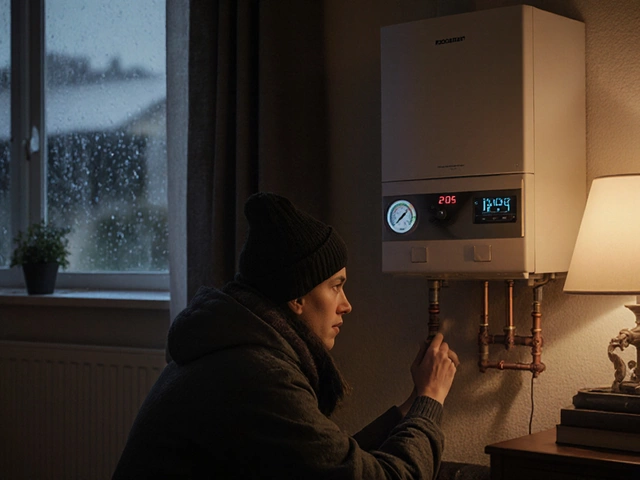You walk into the kitchen, start your morning routine, and find that not-so-pleasant surprise—the refrigerator isn’t as cold as usual. Panic? Maybe a little. It’s been keeping leftovers and groceries chilly for seven years. That magical fridge birthday gets folks debating: Do you fix it, or cut your losses? Here’s where the story gets interesting; the answer’s not always as obvious as you think.
Understanding Refrigerator Lifespan and Performance
Refrigerators don’t last forever, though we all wish our favorite appliances would just keep humming along. For these cool machines, the average lifespan is around 10 to 15 years, but things can get surprising. The actual life depends on the brand, how much you’ve loaded it, the temperature swings in your home, even where it sits in your kitchen. Seven years isn’t ancient, but it’s not new either. Most major brands—think Whirlpool, GE, or Samsung—design fridges with an expected lifespan that starts to waver after the 7-to-10-year mark. Here’s what a 2023 Consumer Reports study showed:
| Brand | Average Lifespan | Warranty Period |
|---|---|---|
| LG | 13 years | 5 years (sealed system) |
| Samsung | 10 years | 5 years (compressor) |
| Whirlpool | 14 years | 1 year |
| GE | 13 years | 1 year |
So, at seven years, you’re crossing into the “could go either way” territory. But one thing is clear: just because it’s broken doesn’t mean it’s done. Some fixes are pretty straightforward and give you a few more years. Others, well, might just be a money pit.
Repair vs. Replace: Breaking Down the Real Costs
Staring at your warm fridge, you’re probably asking, “Is fixing it going to cost as much as a new one?” The cost question is the deal-breaker for most folks. The answer? It depends on what’s busted.
- Fixing 7 year old refrigerator can cost anywhere from $150 (simple thermostat or fan) up to $800 (bad compressor or sealed system). The national average for refrigerator repair in 2024 was $350, based on data from HomeAdvisor.
- Replacement with a new, basic fridge may run you $700–$1,200, while high-end models soar beyond $2,500.
- Door seal/gasket replacement: $50–$125 installed.
- Thermostat repair: $100–$300.
- Evaporator fan motor: $120–$250.
- Condenser coil cleaning or replacement: $60–$200.
- Compressor replacement: $400–$800. (The big one!)
- Sealed system leaks: $700–$1,000 (often not worth it unless it’s a luxury model).
Here’s the trick: if your fridge repair costs more than half the price of a new one, most pros will tell you to walk away. There’s also the 7-year rule: if it’s older than seven years and needs a major repair, replacement almost always wins. That’s because new fridges are more energy-efficient, have better tech, and will save you money on utility bills. Energy Star models use up to 40% less energy than a 2010 refrigerator—an easy $50–$100 a year back in your pocket.
Then again, if all you’re dealing with is a tired gasket or noisy fan, repair makes sense. It’s fast, relatively cheap, and less hassle than choosing and installing a new fridge. You get a few more years of service out of your trusty cold keeper. Don’t forget about warranty: check your paperwork or call the manufacturer’s number, because some parts (especially compressors) might still have partial coverage even at seven years.

When a Quick Fix Makes Sense
Not every fridge issue spells doom for your kitchen. Sometimes, the fix is so simple you’ll kick yourself for stressing out. Think loose door hinges, ice clogged in the vents, or dirty condenser coils—most of those you can handle with a screwdriver, a vacuum, and 20 minutes of your time. Here’s a quick DIY inspection checklist:
- Check the power source—sometimes a fridge "failure" is just a tripped breaker.
- Inspect door seals—the bill for leaks may show up as a frost problem or warm food.
- Clear condenser coils with a coil brush (look at the back or underneath—it’s surprising how much dust builds up).
- Make sure vents and fans aren’t blocked by food items.
- Re-set the thermostat if digital controls go wonky (unplug and wait two minutes before restarting).
- See if there’s water pooling at the bottom; a clogged defrost drain could be to blame (a turkey baster and warm water helps here).
If you go through those steps and things improve, awesome—you just dodged a repair bill and added years to your fridge’s life. If not, call a technician for an estimate but be smart: get two quotes if it’s a pricey repair. There’s no law saying you have to accept the first bill you get.
Sometimes the issue is a worn-out compressor, which is the beating heart of your appliance. If you hear clicking or see the fridge constantly cycling, that’s a clue. Sadly, compressor replacement rarely makes economic sense unless it’s an ultra-high-end model or under warranty, because it often costs more than a decent new fridge. There are exceptions—a Sub-Zero fridge, for example, can be worth repairing since the price of a new one is astronomical.
Another point: don’t overlook refrigerator age when deciding. If your model has served you well, still looks good, and no new fridge will fit the space quite right, a quick repair makes sense. But if you’ve already fixed it twice in the past year, it’s on borrowed time.
How to Decide: Practical Tips and Long-Term Thinking
So, should you repair or replace? Here’s how to decide with clear eyes.
- First, check the sticker inside your fridge for the manufacture date—ramps up your negotiating power with repair techs and helps with warranty calls.
- Do the math: if the repair costs more than 50% of a replacement, go shopping instead.
- Take a hard look at your energy bill—older fridges (those pushing past year 7) can cost you an extra $5–$10 a month, sometimes more.
- If noise, frost, or temperature swings are the main problem, try a quick DIY maintenance before paying for a pro.
- Ask yourself: Do I like my current fridge? Do I trust it for leftovers, meds, or baby food? If yes, and repairs are minor, fixing it up is probably right.
Sometimes, local appliance repair shops offer a diagnostic call for $99, and if it’s a minor part, they’ll waive that cost if you repair with them. Don’t get talked into an expensive repair for a very average fridge without shopping around. If your fridge’s model or brand is known for reliability, that tips in favor of fixing—especially if complaints on Google point to newer fridges giving out faster.
If you go the replacement route, measure your space, save your owner’s manual, and look for rebates from your city or power company. There are often $50–$100 rebates for people upgrading to Energy Star. Moving from a 2010 fridge to a 2025 model can save enough energy to offset the cost over a few years, especially if you keep your kitchen cool and clean the coils annually.
Bottom line: at seven years, most fridges are still in the game unless the repair hits your wallet hard. With smarter features, better insulation, and quieter motors, new fridges offer a tempting upgrade—but don’t ditch a reliable workhorse just because it’s not shiny anymore. Fix what makes sense, recycle smart, and enjoy that midnight snack knowing you made the call that fits your lifestyle best.


